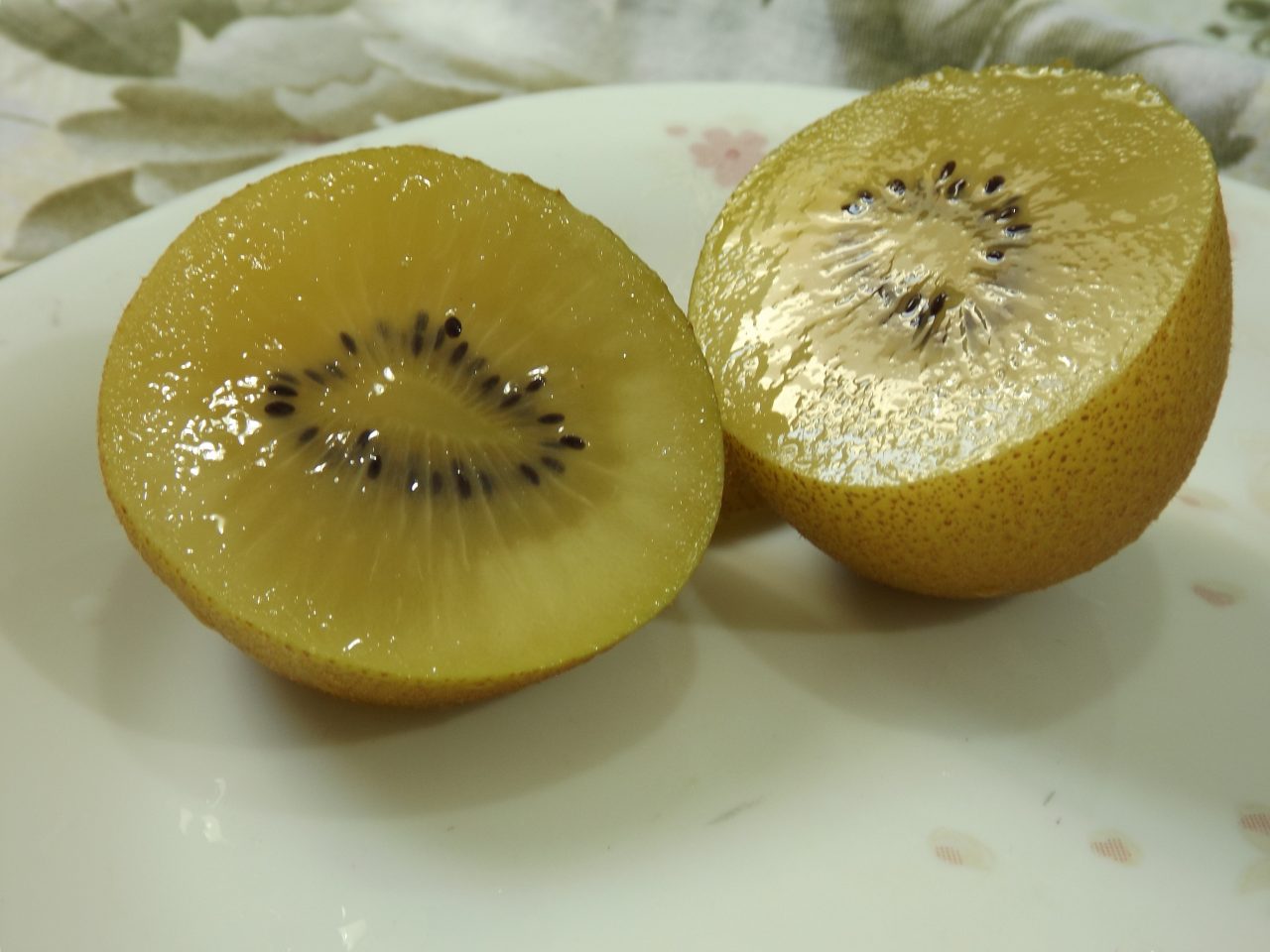Differences between Yellow and Green Kiwi

Previously we could see that the cultivation of the yellow or Gold kiwi is very widespread. But really, what difference is there between yellow and green kiwi? What is it about kiwi that makes it so special and nutritious? Yellow or green kiwi? Let's find out!
The History of the Yellow Kiwi
Yellow Kiwis were first cultivated in the late 1970s in New Zealand. But there were no successful plantations until 1992. It is undeniable that both kiwis provide a very high nutritional value for our diets, but knowing their differences is very interesting information.
Which kiwi is better, green or yellow?
Yellow and Green Kiwi Calories
The calories that we can find in both the Yellow and Green Kiwi are quite similar. A serving, say about half a cup, contains 110 calories for green kiwi, and 112 calories for yellow kiwi.
Carbs of a yellow and green Kiwi
As in practically all fruits, almost all calories are due to carbohydrates. Returning to the previous measure, the Green Kiwi contains 26g of carbohydrates and 5.3g of Fiber.
In the case of the golden kiwi, very similar: 26g of carbohydrates and 3.7g of fiber. In this case we can say that the yellow kiwi is worse if we are including this fruit to combat constipation.
Fats and Proteins
In the event that we look for a significant protein contribution in the kiwi, we must change the fruit. Neither yellow nor green kiwi contain high doses of fat and protein, but let's check the values:
Using the same measurement above, green contains 2g of protein and 0.9g of fat, while gold has 2.2g of protein and 1g of fat.
Not bad, but not optimal either. Consuming a Yellow and Green kiwi, whatever it is, daily, can give us that extra protein that never hurts.
What Vitamins and Minerals do the Yellow and Green Kiwi contain? What nutritional values does it have?
Kiwi - Properties and Contraindications
We come to the important values of the kiwi, and its contraindications, or its "negative" values. It is worth mentioning that it has practically none, unless we suffer from an allergy to fruit. Except for that rare occasion, all it brings us are benefits.
We are clear that we consume this fruit, above all, because of the great vitamin contributions that it gives us, but which kiwi is better? Difference between green and yellow kiwi?
Green Kiwi Properties
166mg of Vitamin C
562mg of Potassium
36mg of Magnesium
Properties of the Yellow / Gold Kiwi
196mg of Vitamin C
588mg of Potassium
26mg of Magnesium
These properties do not vary when consumed on an empty stomach. There is a widespread myth that we can absorb more nutrients and minerals from this fruit if we consume it on an empty stomach, but from here we confirm that we cannot.
Kiwi fasting does not provide additional values
It is undeniable to affirm that the high planting and the variants of Yellow Kiwi are mainly due to the fact that they managed to create a type of kiwi with better vitamin and mineral properties. In any case, the difference is negligible between the Yellow and Green Kiwi, and the decision is ours on which one is better or which one we should consume. For our part, we like green kiwi much more!
Vitamins of the Yellow Kiwi or SunGold
Asking us what kiwi contains is something really common, and the answer is quite simple. In this section you will learn what the Kiwi contributes to our diet.
In the case of Yellow Kiwi or Kiwi Sungold, it has a very high base of Vitamin C (161mg). Among its other components are:
Vitamin A (23mg)
Vitamin B1 / Thiamine (0.01mg)
Vitamin B2 / Riboflavin (0.07mg)
Vitamin B3 / Niacin (0.23mg)
Vitamin B6 / Pyridoxine (0.08mg)
Vitamin E (1.42mg)
Folic Acid (30.6 micrograms)
Vitamins of Green Kiwi or Zespri Green
The main problem with the Green Kiwi is that it cannot compete with the yellow one in the amount of Vitamin C, but it is undoubtedly the winner in terms of vitamin A, with a dose of 90mg
Vitamin C (85.1mg)
Vitamin B1 / Thiamine (0.01mg)
Vitamin B2 / Riboflavin (0.05mg)
Vitamin B3 / Niacin (0.01mg)
Vitamin B6 / Pyridoxine (0.07mg)
Vitamin E (0.86mg)
Folic Acid (38.2 micrograms)Differences between Yellow and Green Kiwi
Leave a Reply